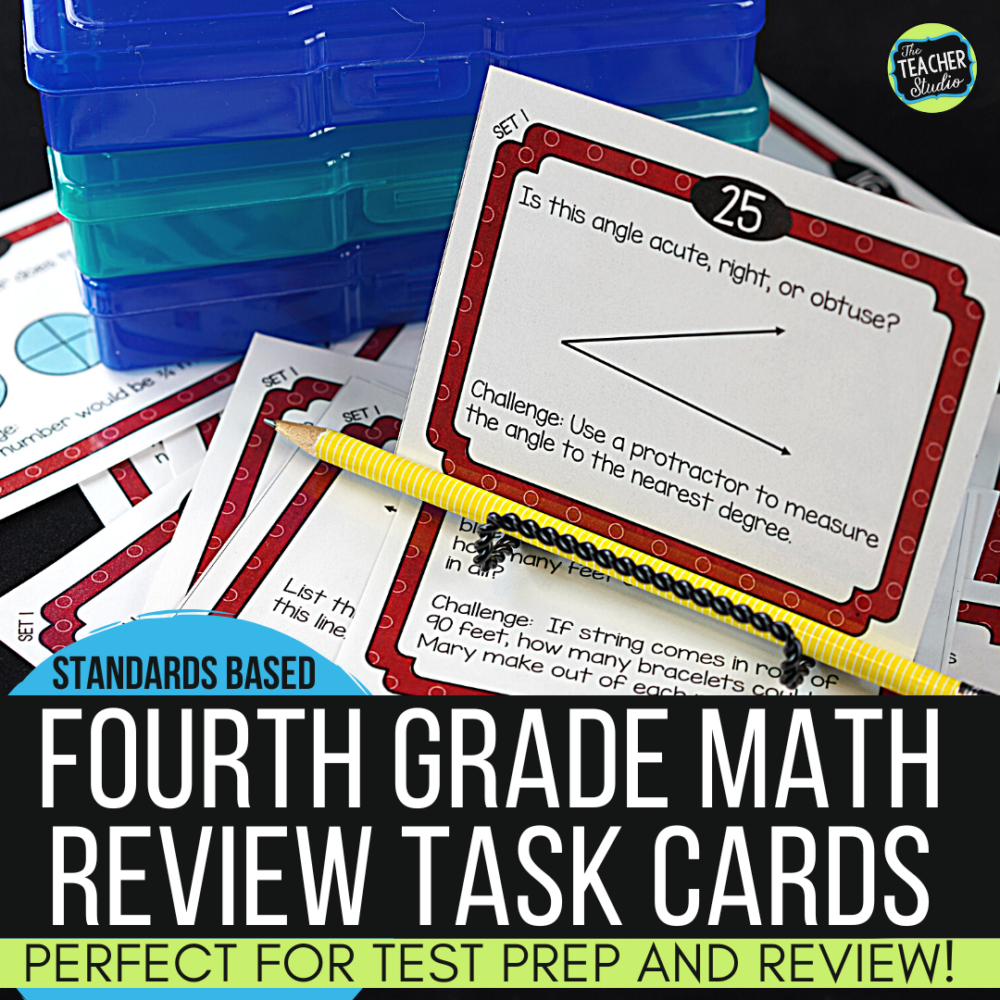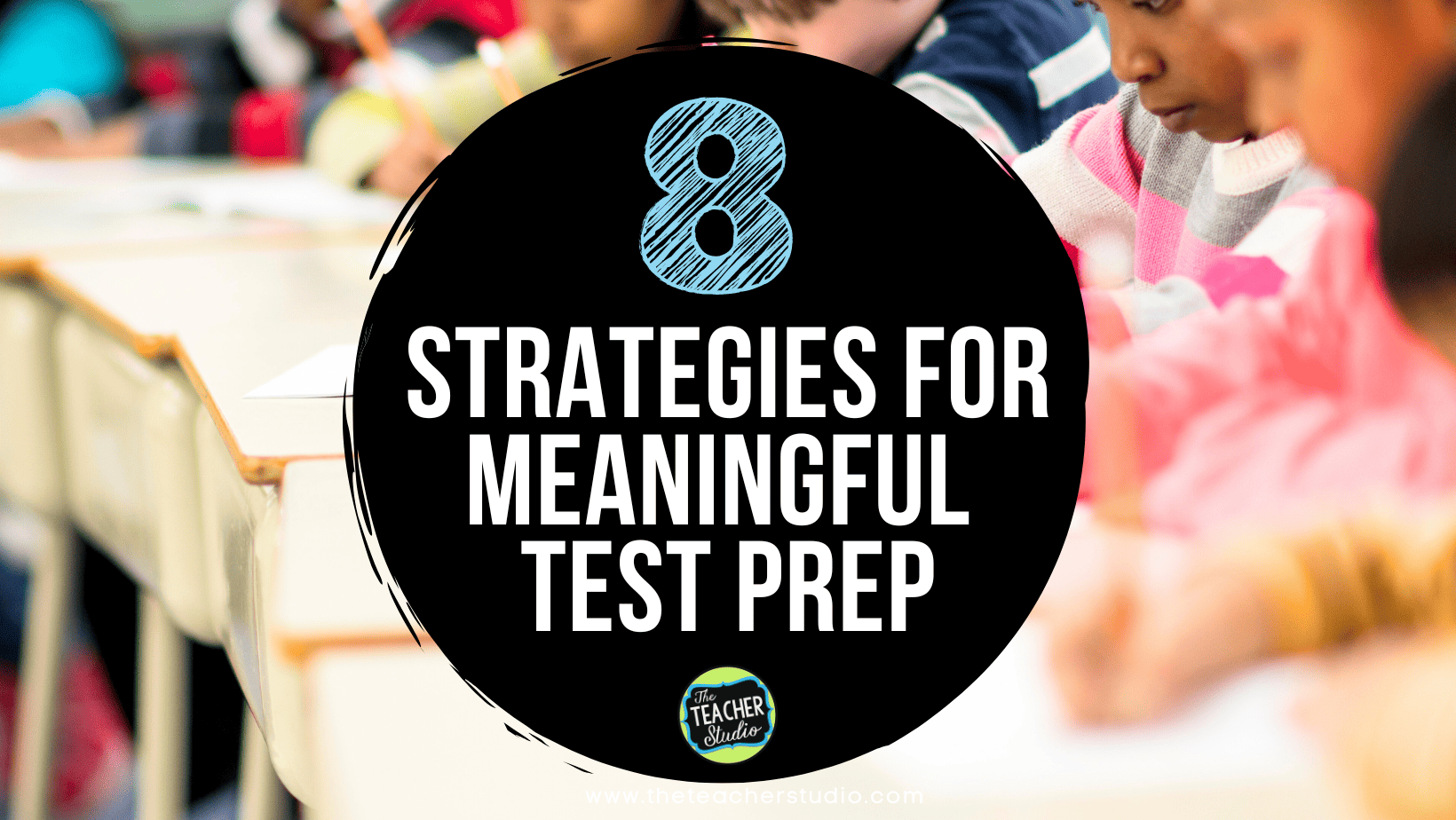Before we begin, I want to address the issue of standardized testing and test prep. It is getting a pretty bad rap in the media and among teachers–and for good reason. We test more than ever. We spend more time PRACTICING to test than ever. The stakes are higher than ever. And this saddens me…because standardized testing DOES have a purpose when done in a reasonable way. The simple truth is, we DO need a way to monitor our schools and our programs. If my district finds that its elementary scores in fractions are dropping–we need to look at why. If we notice trends in our special populations–we need to look at why.
Test Prep–a realistic approach
That being said, I am always so sad when I hear stories about teachers spending weeks and weeks on test prep…or students who are totally stressed out about testing…or any number of other “horror” stories. It just doesn’t need to be that way–and we, as teachers, have the ability to lower the stress for everyone involved. Now I get it–you can’t control certain things in your school or district–but you CAN take some control in your own classroom (or with your own children!). Here are some of the things I do to help keep the testing madness somewhat under control!
1. Build a culture of a growth mindset and positive attitudes.
First of all, students pick up on our mindsets and attitudes, so I make sure to always model a positive attitude about the testing process and make sure my students know why we do them–and that they are only one way that teachers can learn about students and what they know and can do. We also work ALL YEAR on developing that “I can do this!” spirit and nurturing a growth mindset so they can the right perspective going into the testing.
After all, helping students to understand how their mindset can affect their success is important for LIFE, not just testing. I use this resource at the beginning of the year, and “testing season” is a great time to pull it back out, revisit it, and talk about how it applies to the big tests. Seriously, my student finish their testing (and we have to do a LOT in fouirth grade!) and, for the most part, say things like, “That was way better than I thought it would be!” or “I think I did great!”. I’ll take it.
2. Get students comfortable with experimenting and trying things in different ways.
One thing that I have noticed over the years is that students who are successful at testing are willing to tackle problems–even if they aren’t sure what they are being asked to do. They have a toolbox of strategies to use when encountering new and novel situations. This makes them feel they have some control! We can’t teach every question they encounter on the test–nor should we. Students who are willing to just dig in and “decode” the test…to see what they think the question is asking and draw from their strategy bank to dig in, will do just fine. All year long we practice with tough problems and I coach them on how to tackle them. One of my favorite lines? “What would you do first if you knew what to do?” You would be AMAZED at how this unlocks students!
3. Help students learn to “prove” their ideas by looking back at the text or graphics.
Another thing I have learned is that the most successful test takers are those students who are willing to slow themselves down and prove their answers. This means we need to work ALL YEAR on having our students defend their thinking with examples, by having them look back in texts to provide evidence for their thinking and to have them avoid saying “I guess” or “I think” when they can say, “It shows right here…” or “I knew it when I saw…” Again, these are not skills important only for testing–these are simply GOOD instructional strategies. Students should be asked to defend their thinking, provide evidence, and refer back to the text because it makes sure they are accurate and precise–it just so happens that students who do this tend to do better on standardized tests.
4. Basic test prep strategies should be taught and practiced
See what you think
- Reading all answer choices before choosing
- Try inserting answer choices into the question to see if they make sense
- Rule out bad choices and choose the best of the remaining ones
- Use scratch paper rather than relying on your memory
- Read and reread
- Answer constructed response questions fully
- Look for multiple-part questions
- Use graphics, maps, charts, and graphs carefully and look for all the details included in them
- How to ignore tricky words and names
- Rereading and revising written answers
- Double checking to make sure all questions have been answered
- and more!
5. I make sure my students have the technology experiences needed to be successful.
6. Good readers and thinkers are good test takers; providing quality instruction all year is the key to successful test prep!
I think if you were to summarize my thoughts about test prep, you would find something like this:
- Good instruction ALL YEAR is more effective than trying to cram in review material before the test.
- Building the climate for success and valuing effort and hard work are better than building up the “worry” and high-stakes nature of the tests.
- There are easy test-taking strategies that are useful and worth teaching.
- “Real world” reading skills such as rereading, using graphic and images, and “proving” ideas by revisiting text is not just good for test-taking–but just overall good reading.
- “If you teach it, they will come” is my motto–I’d rather make sure I teach well all year and know it will pay off in good thinkers, confident students, and a testing climate that is low stress and reasonable.
- Students need exposure to great reading, great writing, amazing science and social studies, and they need to WANT to show what they know. It’s a climate and culture of learning and achievement. We can impact that!
- Providing some low-pressure review materials never hurts. For example, I use these task cards as warm-ups to just get students talking about different math concepts in those few weeks before the test just to get some of those different problem types back in front of them.

- Finally, remember that our students are little sponges who absorb whatever vibes we send out to them! No matter what pressure you are feeling from administration, the public, social media, or yourself, walk through that classroom door and make sure that you send a positive, controlled, “We GOT this!” message to your students.
If you are interested in another post I wrote about test prep, just CLICK HERE. Interested in the resource that I work from as a part of my “minimalist” test prep? Click HERE or the image below.










